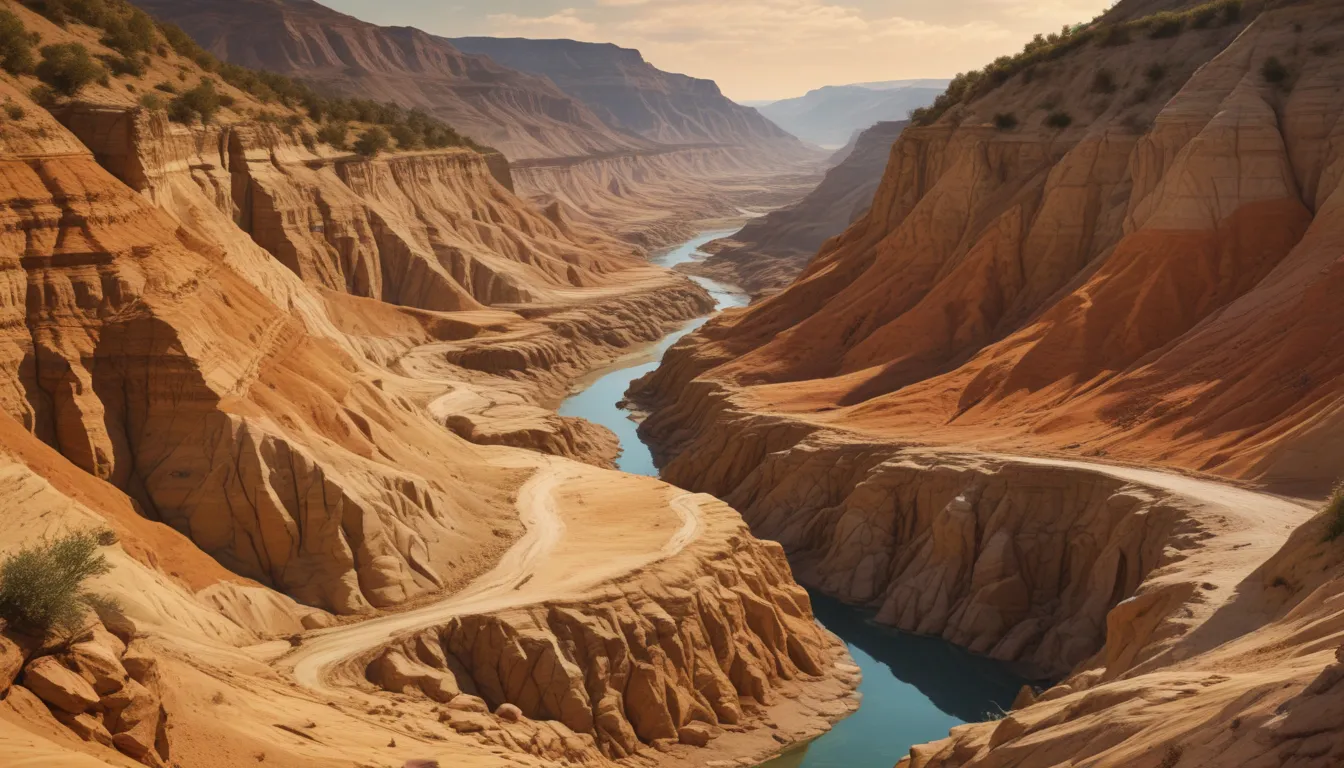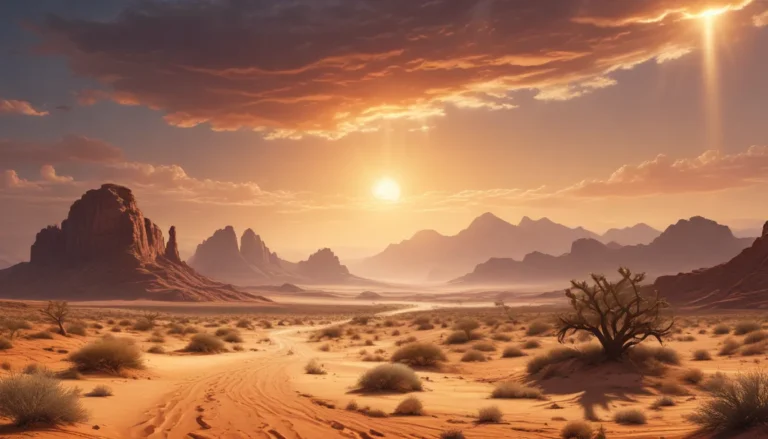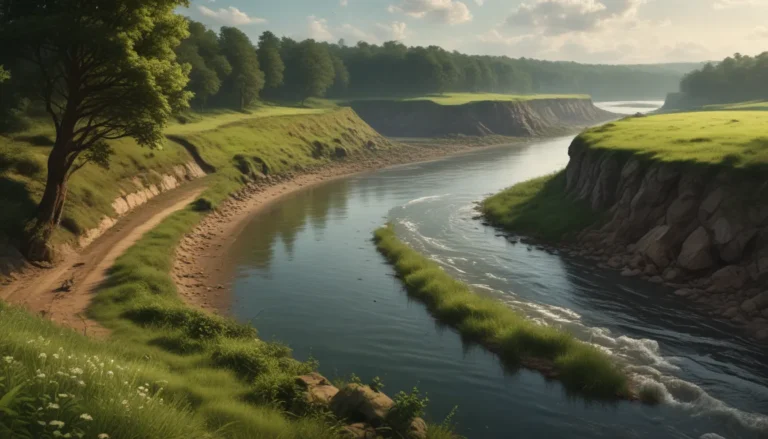A Note About Images: The images used in our articles are for illustration purposes only and may not exactly match the content. They are meant to engage readers, but the text should be relied upon for accurate information.
Loess deposits, a geological marvel that has captured the curiosity of scientists and researchers for centuries, are an intriguing phenomenon worth exploring. Comprised of fine-grained, windblown sediment, these deposits are scattered across various regions worldwide, from the vast plains of China to the rolling hills in the United States. Despite their widespread presence, there is still much to uncover about these enigmatic formations. Join us on a journey as we delve into 17 captivating facts about loess deposits, shedding light on their origins, composition, and significance in Earth’s geological history.
Understanding the Essence of Loess Deposits
Loess deposits have a rich history that dates back millions of years, offering a unique glimpse into the past. From the last glacial period to present-day formations, these deposits provide valuable insights into Earth’s evolutionary timeline.
The Global Presence of Loess
One of the most fascinating aspects of loess deposits is their ubiquitous nature. Found in various corners of the world, from the Loess Plateau in China to regions in Europe and the Americas, these deposits underscore their geological significance on a global scale.
Unveiling the Mysteries of Sedimentary Layers
The composition of loess deposits is a testament to the relentless forces of wind and time. Comprising predominantly silt-sized particles, these sediments travel great distances before settling, creating distinct layers that hold valuable information about climatic changes and environmental conditions.
Unlocking the Secrets of Earth’s Climate
Loess acts as a natural time capsule, preserving records of past climates and ecosystems. By studying these deposits, scientists can unravel the mysteries of temperature variations, precipitation patterns, and vegetation shifts throughout history.
The Intriguing Thickness of Loess
Some loess deposits can amass impressive thicknesses, reaching hundreds of meters in depth. These deep accumulations serve as valuable resources for scientific research, offering a wealth of information about Earth’s geological past.
The Resilience of Loess to Erosion
Despite its fine-grained nature, loess exhibits remarkable resistance to erosion, particularly in comparison to other sedimentary formations. This resilience plays a crucial role in maintaining the integrity of landscapes shaped by these deposits.
The Fertility of Loess Soils
One of the distinguishing features of loess deposits is their exceptional fertility, making them prime locations for agricultural activities. Throughout history, regions with loess plains have been vital hubs for farming and cultivation.
Unraveling the Impact of Wind Erosion
While loess may resist water erosion, it is highly susceptible to wind-driven processes. This vulnerability can lead to the transport and redeposition of sediment, sculpting landscapes and creating unique landforms over time.
The Allure of the Yellow Hue
A distinctive characteristic of loess is its striking yellow coloration, most notably seen in regions like China’s “Yellow Earth” and the Yellow River Valley. This vibrant hue is attributed to the presence of iron oxide minerals within the deposits.
The Cultural Tapestry of Loess Landscapes
Beyond their geological significance, loess landscapes hold profound cultural implications. These formations have influenced architectural styles, artistic expressions, and traditions in the regions they inhabit, shaping the cultural fabric of communities.
Preserving Ancient Life Forms
Loess deposits have served as treasure troves for paleontologists, yielding fossil remains of ancient animals and plants. These fossils offer valuable insights into past ecosystems and the evolutionary history of life on Earth.
The Diverse Microclimates of Loess Regions
The presence of loess can create microclimates that differ significantly from surrounding areas. These specialized environments affect temperature, humidity, and wind patterns, fostering unique ecological niches and habitats.
Overcoming Engineering Challenges
Building infrastructure and development projects in loess regions present significant engineering hurdles. The stability and erosion susceptibility of these deposits require meticulous planning and design to ensure the integrity of structures.
The Legacy of Loess in Construction
Loess has played a pivotal role in historical engineering feats, such as the construction of the Great Wall of China. Its cohesive properties made it an ideal material for enhancing the structural stability of monumental projects.
A Glimpse into Ancient Civilizations
Studying loess deposits offers invaluable insights into the history of early human civilizations and migration patterns. Archaeological discoveries in loess regions have reshaped our understanding of ancient societies and their interactions with the environment.
Nurturing Biodiversity in Loess Landscapes
Loess regions harbor diverse ecosystems teeming with a variety of plant and animal species. These areas serve as crucial ecological corridors and biodiversity hotspots, supporting a rich tapestry of life forms.
Embracing the Enigmatic Nature of Loess
While much has been revealed about loess deposits, various mysteries still shroud these formations. Scientists continue to unravel these enigmas, unveiling new discoveries and challenging existing theories, further deepening our understanding of these geological wonders.
Conclusion: Delving Deeper into the World of Loess Deposits
In conclusion, the world of loess deposits is a captivating realm filled with intrigue and wonder. From their ancient origins to their modern-day significance, these sedimentary marvels offer a portal to Earth’s geological past and the interconnectedness of natural processes. Whether you are drawn to their scientific complexities or cultural influences, exploring the realm of loess deposits is a journey well worth embarking on.
FAQs
-
What is loess?
Loess is a sedimentary deposit composed of fine-grained, wind-blown particles that are highly fertile and conducive to agriculture. -
Where can loess deposits be found?
Loess deposits are distributed globally, with notable occurrences in regions such as China, the United States, Europe, and Argentina. -
How are loess deposits formed?
Loess deposits are formed through the accumulation of wind-blown dust and silt particles that settle over time, creating distinctive layers of sediment. -
What are the agricultural implications of loess deposits?
Loess deposits are renowned for their fertility, making them ideal for agriculture and farming activities in regions where they are present. -
Can loess deposits be used for dating purposes?
Yes, the layering and composition of loess deposits can provide valuable insights into past climatic conditions and aid in relative dating techniques. -
Are there any environmental concerns associated with loess deposits?
In some cases, the erosion of loess deposits can lead to soil degradation and increased sedimentation in water bodies, highlighting the importance of sustainable land management practices. -
What other applications and studies are associated with loess deposits?
The study of loess deposits extends to areas such as landscape evolution, paleoclimatology, archaeology, and engineering, showcasing the diverse range of disciplines that benefit from exploring these remarkable formations.
Embrace the captivating allure of loess deposits as we unravel the mysteries and marvels of these ancient sedimentary wonders. Join us in exploring the dynamic world of geological phenomena and gain a deeper appreciation for the intricate tapestry of Earth’s history and natural processes.






